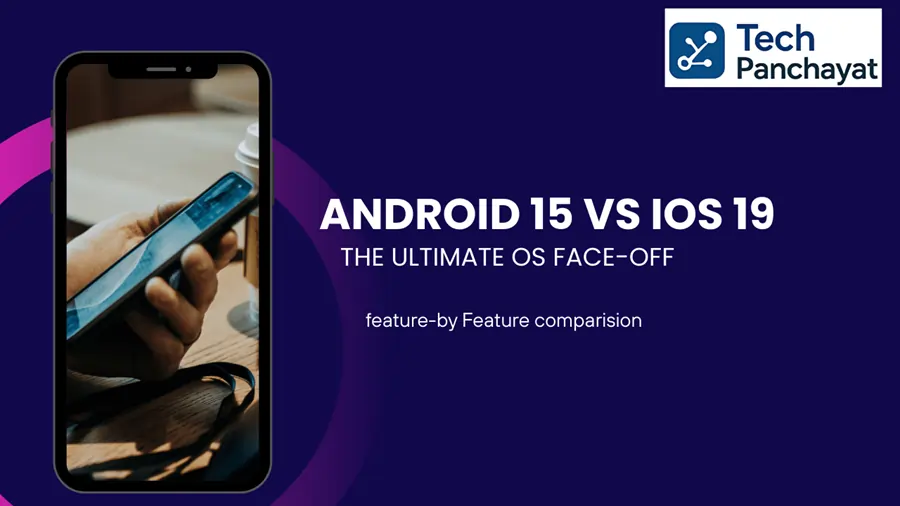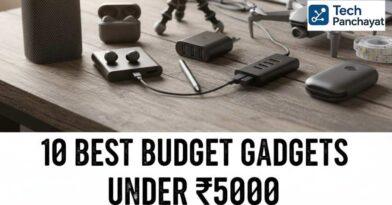The Next Big Step in Smartphone Innovation
Smartphones have become more than just communication devices, they’re our personal assistants, entertainment hubs, and productivity machines. Every year, hardware upgrades make headlines, but the real game-changers often come from the operating systems (OS) that power these devices. In 2025, two major updates have taken the spotlight: Google’s Android 15 and Apple’s iOS 19. These aren’t just routine patches. They represent a new era of smartphone innovation, with features designed to make devices smarter, safer, and more efficient. Think AI-powered personalization, advanced privacy controls, smoother multitasking, and deeper ecosystem integration all aimed at redefining how we interact with our favorite tech gadgets.
For Android users, Android 15 focuses on flexibility, customization, and foldable support, while iOS 19 continues Apple’s tradition of polished design, intuitive performance, and unmatched security. Both systems showcase how technology and innovation are shaping the smartphones of tomorrow.
In this TechPanchayat blog, we’ll explore the key highlights of Android 15 and iOS 19, compare their strengths, and discuss what these updates mean for everyday users. Whether you’re considering an upgrade or simply curious about the latest smartphone OS updates of 2025, this guide will help you decide which platform fits your needs best.
The Future Beyond 2025: Where Smartphone OS Is Headed
The updates we’re seeing in Android 15 and iOS 19 are just the beginning. The future of smartphone operating systems is being shaped by trends that go far beyond the usual yearly upgrades. Here are some areas where both Google and Apple are expected to push innovation even further:
Artificial Intelligence at the Core
AI won’t just be an add-on it will be the foundation of mobile OS design. Imagine:
- Your phone anticipating your schedule, suggesting actions before you think of them.
- Voice assistants that understand not just commands but intent and emotion.
- Personalized recommendations across apps, from health to entertainment, based on your daily routine.
By 2026 and beyond, smartphones may evolve into proactive digital companions, guiding decisions rather than simply following instructions.
Seamless Foldable & Multi-Device Ecosystems
Foldable devices are still in their early days, but by the next few years, software will catch up with hardware. Expect:
- OS-level multitasking that lets you run multiple apps fluidly across dual screens.
- Foldables transforming into mini-laptops with desktop-style layouts.
- Cross-device continuity, where you can start a task on your phone and finish it instantly on a tablet, laptop, or wearable.
Android already leads here with foldable support, but Apple is rumored to be exploring foldable iPhones and iPads a sign that iOS will eventually adapt too.
Cloud-First Experiences
Local storage is becoming less relevant as both ecosystems shift toward the cloud-first model:
- Apps that run entirely via the cloud, reducing dependency on device storage.
- Cloud-based backups that restore your phone exactly as it was, even on a new device.
- Gaming, productivity, and even AI tools that stream from powerful servers rather than relying only on your phone’s processor.
This shift could blur the line between smartphones, PCs, and smart TVs.
Integration with Wearables & IoT
Smartphones will no longer be the center of the digital world they’ll act as command hubs for everything else. Future OS versions are expected to bring:
- Deeper integration with smartwatches, AR glasses, and health trackers.
- Smarter home automation that predicts your needs before you even ask.
- Ultra-connected ecosystems where every gadget communicates seamlessly.
For example, walking into your home could trigger your phone to dim the lights, adjust the AC, and queue your favorite playlist automatically.
Sustainability & Longevity
Another big focus for the future is sustainability. With growing concerns over e-waste, both Android and iOS updates will:
- Extend software support for older devices.
- Optimize performance for energy efficiency.
- Introduce features to track and reduce your digital carbon footprint.
Expect more eco-conscious innovations, where software helps extend device life cycles instead of pushing constant upgrades.
The Big Picture
The future of smartphone OS isn’t just about flashy new features it’s about creating a smarter, more sustainable, and more connected digital lifestyle. Whether it’s AI-driven companions, foldable-friendly multitasking, or cloud-powered apps, the operating systems of tomorrow will change how we view smartphones altogether.
In short, Android and iOS are no longer racing to out do each other on just speed or design. They’re competing to define the future of human tech interaction. And for users, that means more innovation, more possibilities, and smarter gadgets in the years ahead.
Android 15 Update What’s New?
Smarter AI Across the System
Android 15 takes personalization seriously. From predictive app shortcuts to real-time voice assistance, the system adapts to your habits. It learns when you typically check emails, commute, or open certain apps and offers shortcuts that save time. Here are some key highlights of Android 15 :
Stronger Security & Privacy Tools
Google introduces:
Private Space 2.0 for protecting sensitive apps.
AI-driven malware detection for instant threat blocking.
More transparent permission controls so you know what apps access.
Performance & Battery Boost
Thanks to adaptive battery AI, Android 15 reduces background power usage by up to 25%. Apps load faster, and multitasking feels smoother, even on mid-range phones.
Built for Foldables & Multitasking
With foldable devices gaining traction, Android 15 optimizes split-screen layouts, drag-and-drop gestures, and dual-app functionality, making multitasking more seamless than ever.
Eligible Devices
Google Pixel 6 and newer
Samsung Galaxy S21 and later
Most 2022+ flagship models
iOS 19 Update – Apple’s Big Leap
A Refined User Experience
iOS 19 focuses on subtle yet meaningful changes. Dynamic widgets, interactive lock screens, and smoother animations make the iPhone feel more fluid and personalized.
Siri Gets an AI Upgrade
Siri now processes requests on-device using advanced AI, meaning faster responses and smarter context. Ask about dinner, and Siri can check your calendar, suggest restaurants, and even make bookings through third-party apps.
Privacy at Its Core
Apple enhances privacy with:
App Tracking Reports 2.0 for deeper data insights.
Face ID multi-profile support, perfect for shared devices.
Private Cloud Backup, ensuring encrypted file storage.
Creativity & Camera Power
For content creators, iOS 19 introduces AI-assisted photo editing, improved low-light photography, and Cinematic Mode 2.0, making iPhones an even stronger creative tool.
Supported Devices
iPhone 12 and newer
iPhone SE (3rd Gen and above)
iPhone 16 lineup
Android 15 vs iOS 19 – Head-to-Head Comparison
Design & Interface
Android 15: Customization king with themes and widgets.
iOS 19: Minimalist, polished, and consistent.
AI Features
Android 15: Predictive personalization and smart actions.
iOS 19: Smarter Siri with advanced contextual awareness.
Privacy & Security
Android 15: AI-driven malware protection, flexible permissions.
iOS 19: Strong tracking reports, encrypted cloud backups.
Performance & Battery
Android 15: Adaptive battery AI improves endurance.
iOS 19: Optimized to Apple hardware for unmatched stability.
Ecosystem
Android 15: Connects well with Chromebooks, Wear OS, and smart home devices.
iOS 19: Seamless integration with iPad, Mac, and Apple Watch
Conclusion
The arrival of Android 15 and iOS 19 marks a defining moment in the evolution of smartphone operating systems. Both platforms are no longer just about incremental updates they are about innovation, intelligence, and integration. Android 15 shines with its flexibility, customization, and foldable-ready design, while iOS 19 impresses with its refined user experience, powerful AI-driven Siri, and privacy-first approach. For users, the choice ultimately depends on personal preference and ecosystem loyalty. If you value freedom, personalization, and diverse gadget compatibility, Android 15 is the clear winner. If you’re already invested in Apple’s ecosystem and want stability with top-notch security, iOS 19 will feel like a natural fit.
What’s most exciting is the bigger picture: smartphones are steadily transforming from tools into intelligent digital companions. With Artificial intelligence at the core, cloud-first experiences, and seamless integration across devices, the future promises smarter, more connected, and more sustainable mobile experiences.
At TechPanchayat, we are trying to give you the real knowledge about Tech, Gadgets, Ai and Inovation by our blogs. Atlast, one thing is certain the coming years will redefine how we interact with technology. Want to shop smartphones wit these new updates , just visit : Flipkart mobile store or you can grab these on Bestsellers on Amazon





